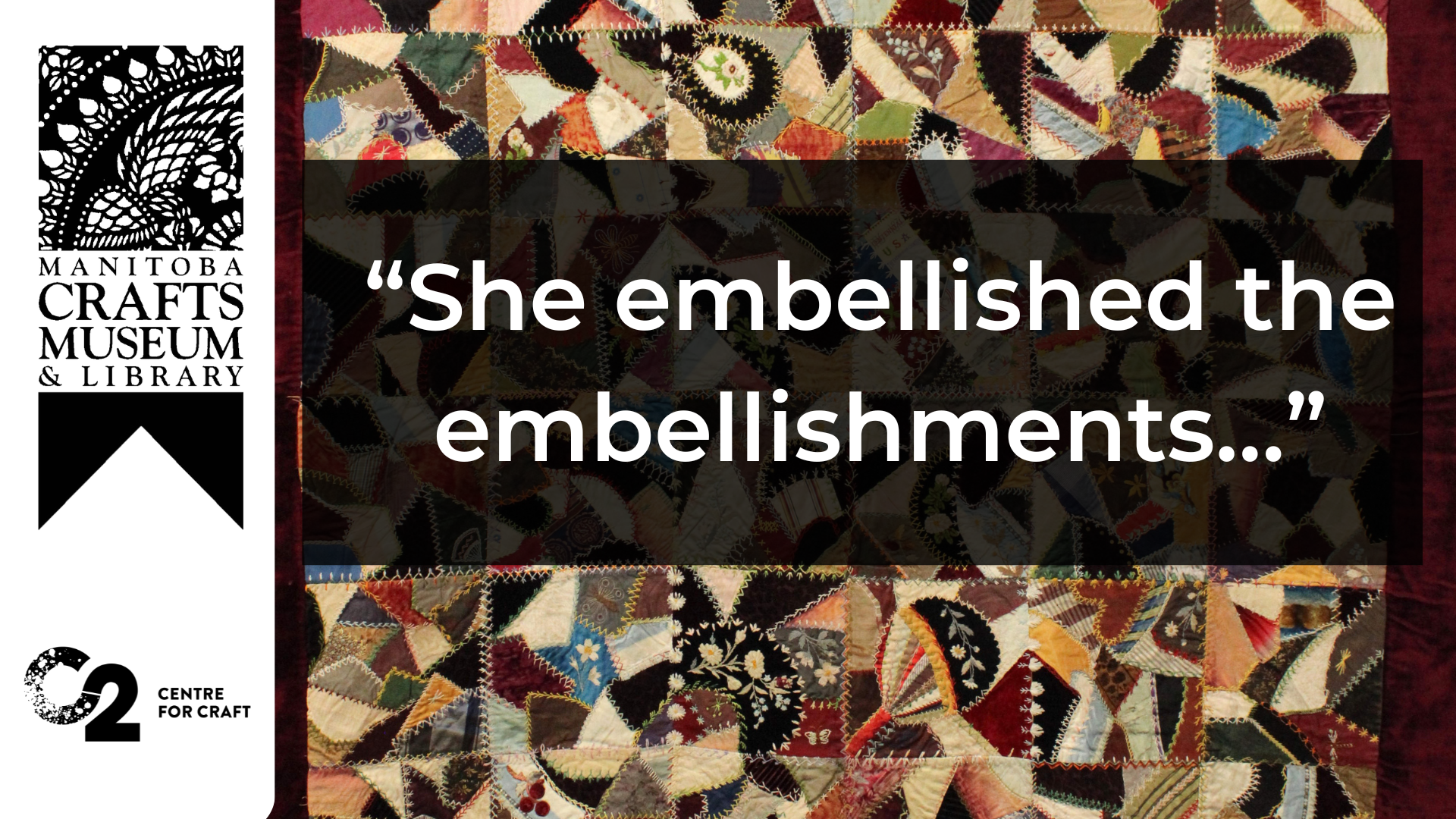The Crazy Quilt craze began in the last quarter of the 19th C. among upper-middle class American women. Though the exact origins of the style are still debated most scholars agree that Philadelphia’s 1876 Centennial Exposition played a principal role in the development of the style. The Expo exposed crafters to new motifs in Japanese art and the fine needlework being produced in England. These influences in the already immensely popular craft of patchwork and quilting led to the creation of the Crazy Patchwork Technique; a form of quilting that specifically lacks repeating motifs and features heavily embellished seams and patches. These early quilts are typically made with rich, expensive fabrics like velvet, satin, or silk. The result is an unmatched visual splendour.
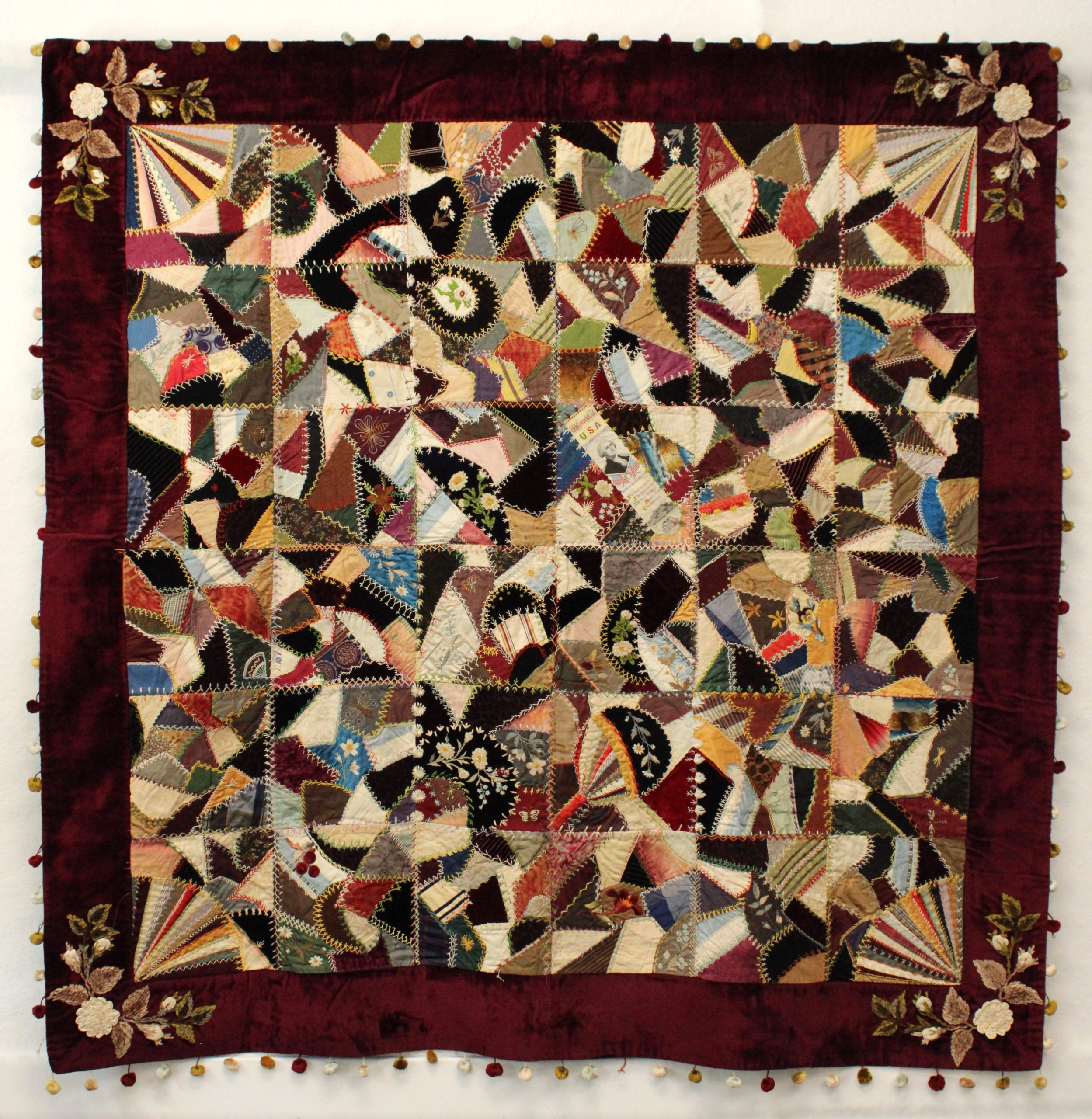
This quilt from MCML’s collection was made by Christine Purdon and is one such example of a richly embroidered Crazy Quilt. Family history records the quilt being at the Chicago World’s Fair in 1893.
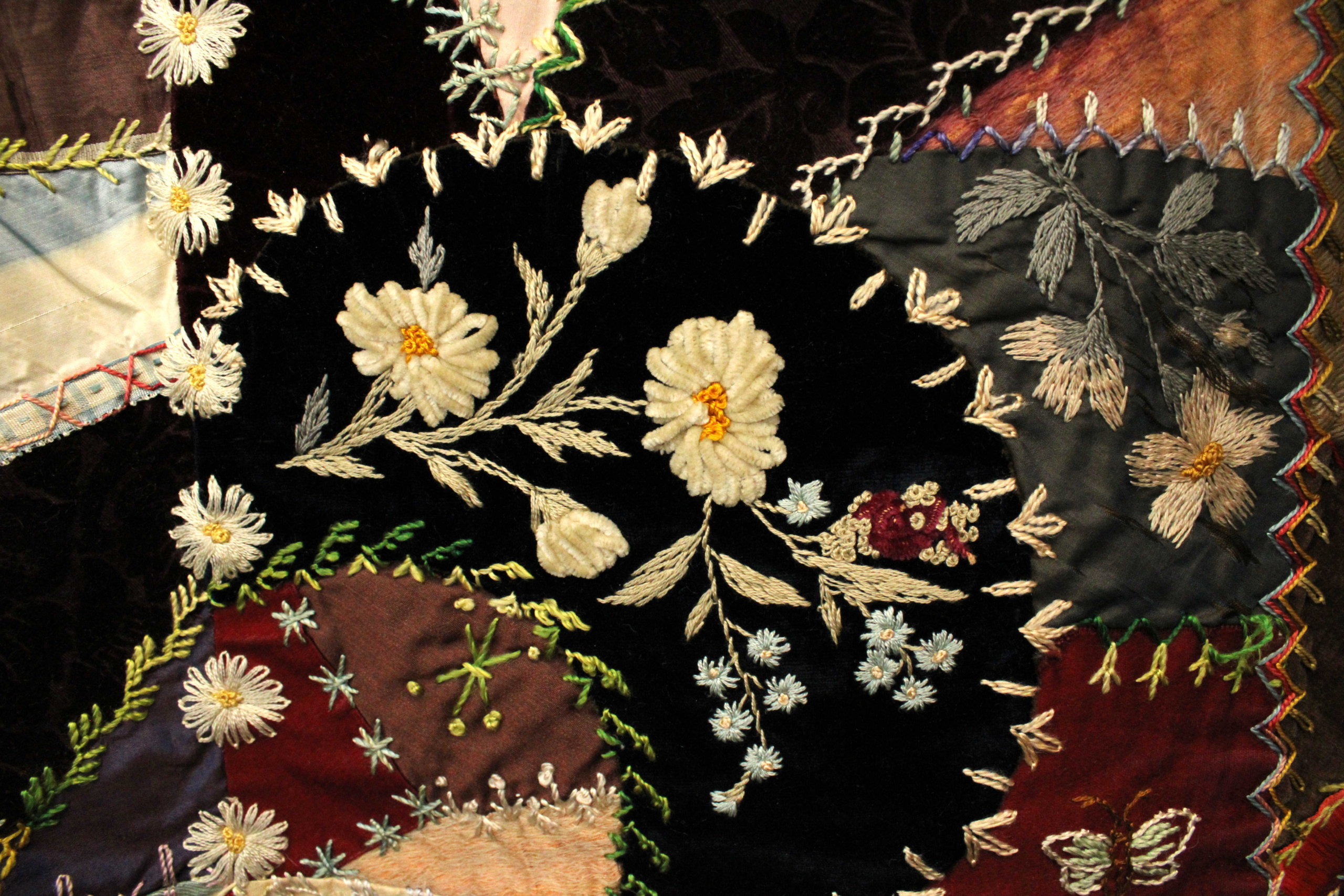
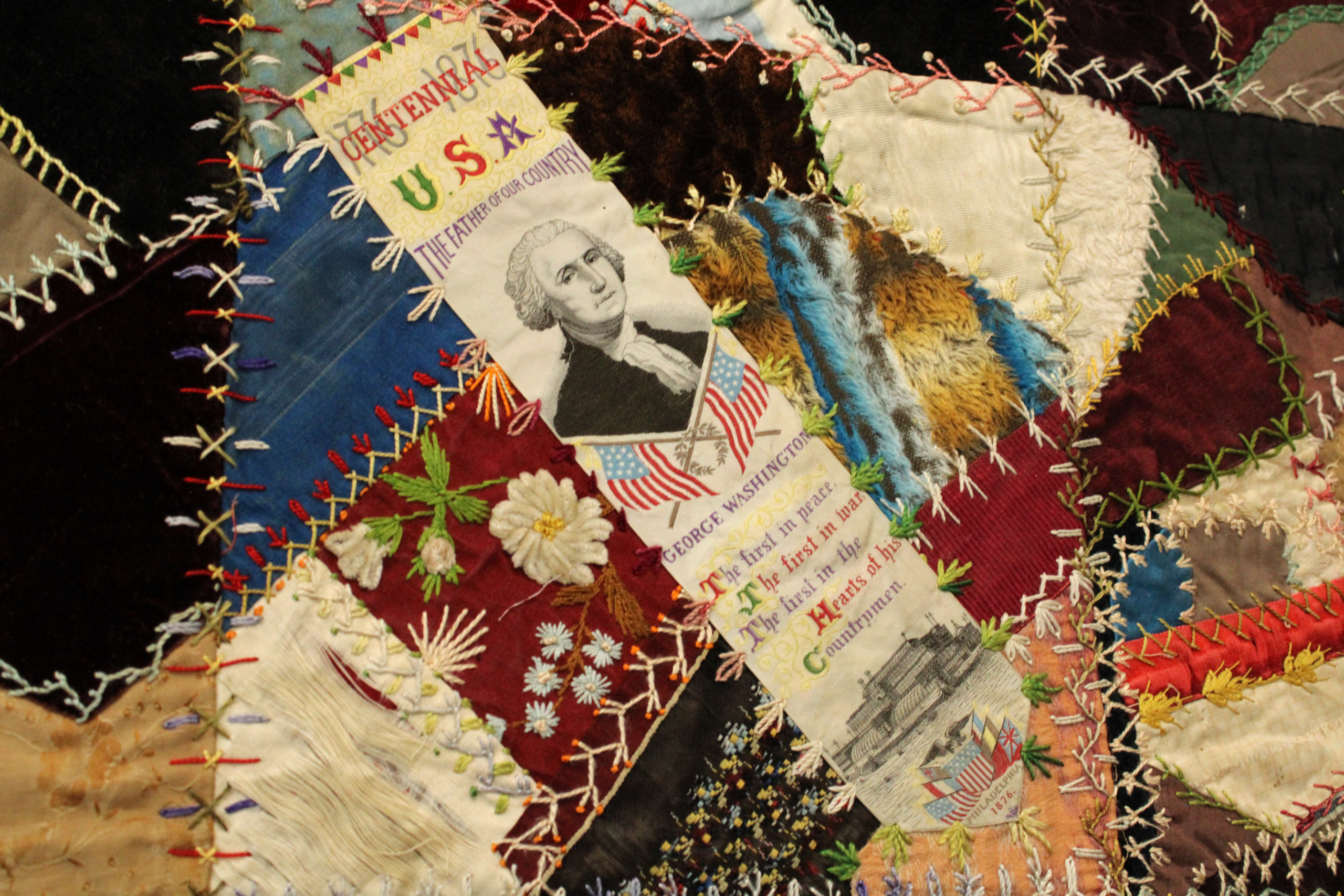
When the style fell out of favour with the urban elite it became another method for the poor to ensure high-quality fabrics were used – down to the last scrap. These utilitarian crazy quilts were more likely to use sturdy, and practical fabrics found in everyday work wear. They also lost much of their earlier over-the-top ornamentation, embellishments, and embroidery.
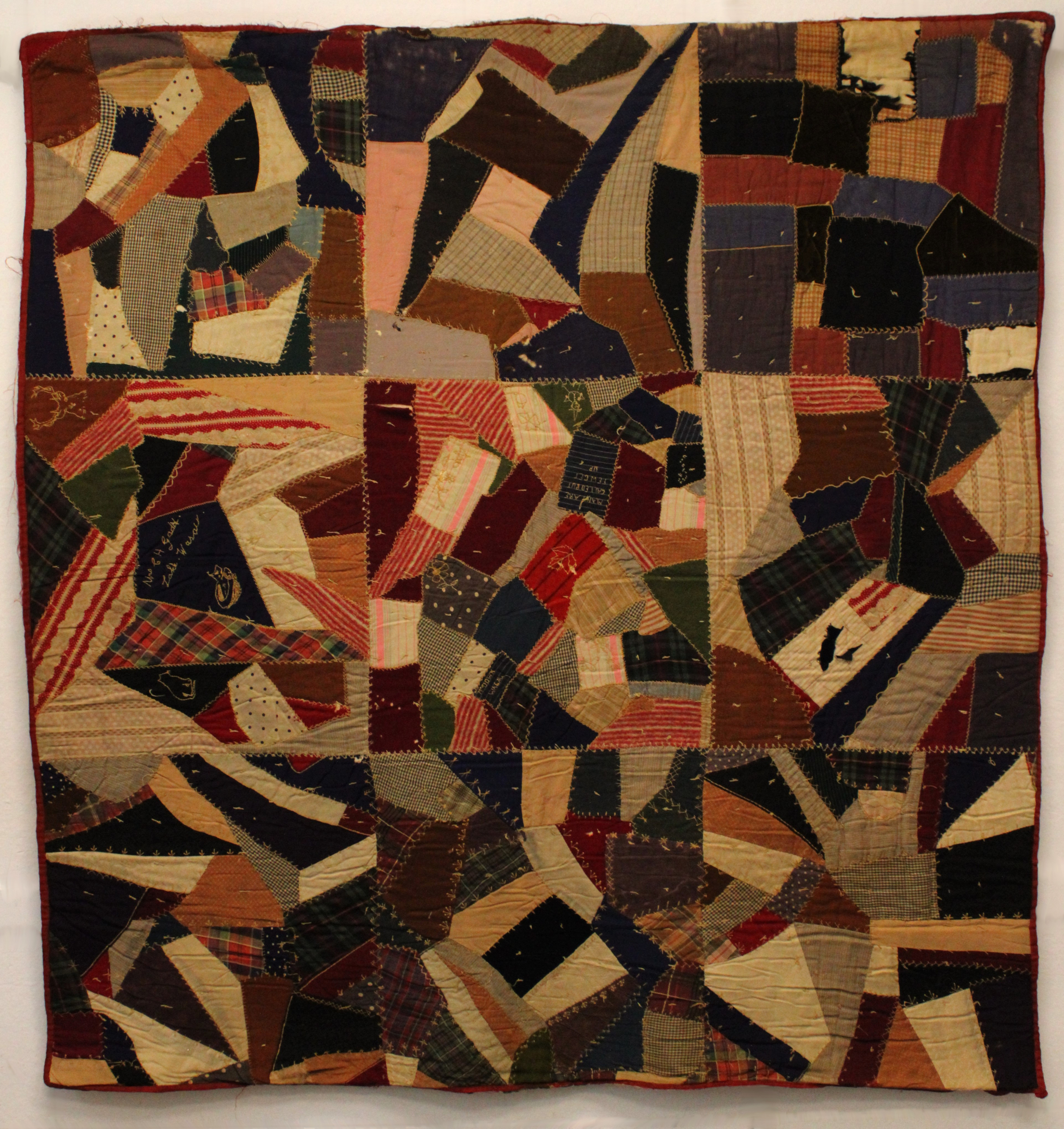
Another quilt in the MCML collection shows this dramatic change in tone. This quilt was made by a group of Women belonging to the Methodist Church in Emo, Ontario. There are several notable differences, the size of the patches has increased, which requires less work to assemble and less ornamentation. The highly extravagant crazy quilts of the rich would have likely taken well over a thousand hours to produce, this is not realistic for a working woman to achieve. These quilts are worked in groups and the embellishments that do remain are very personalized to the women who made the square.
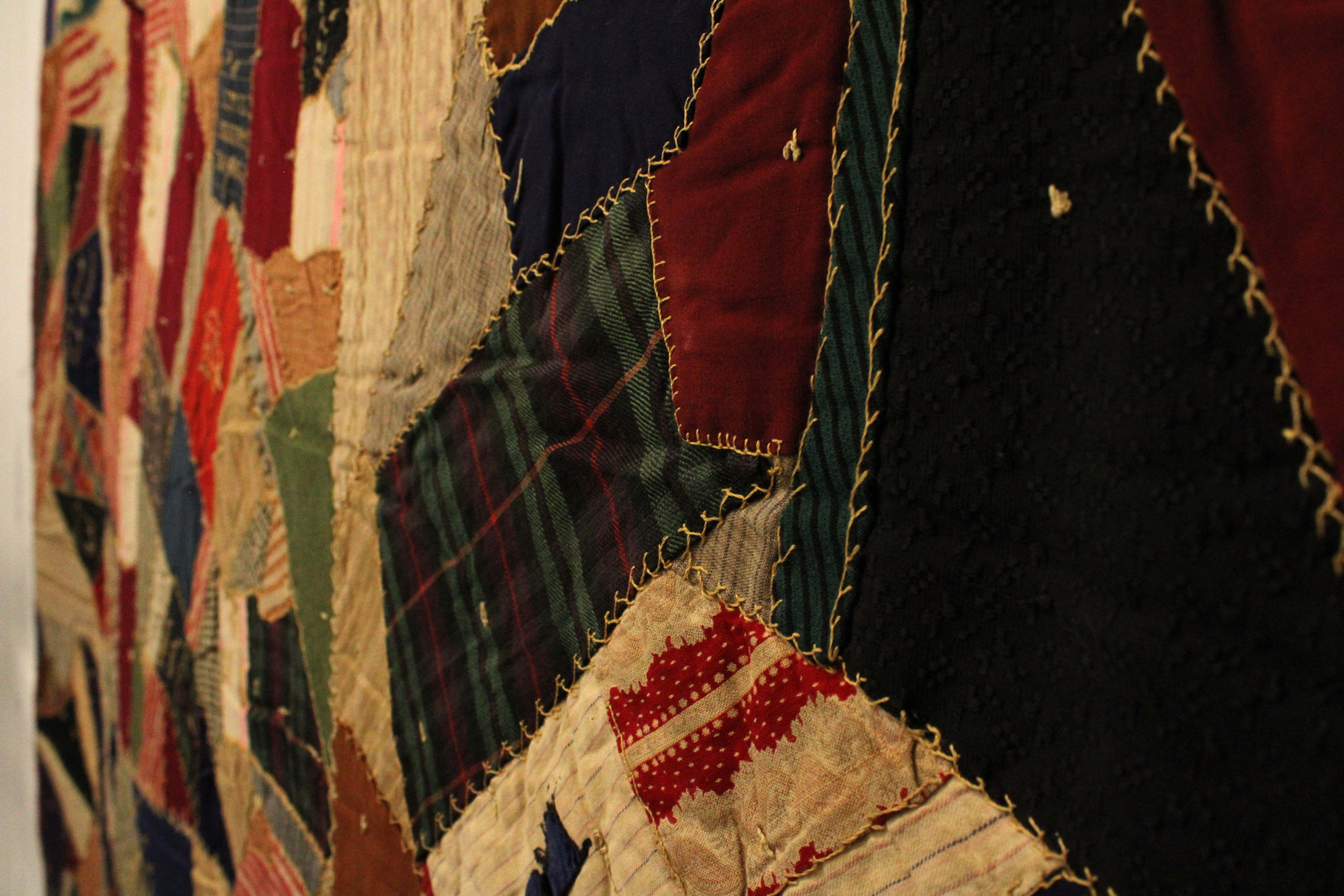
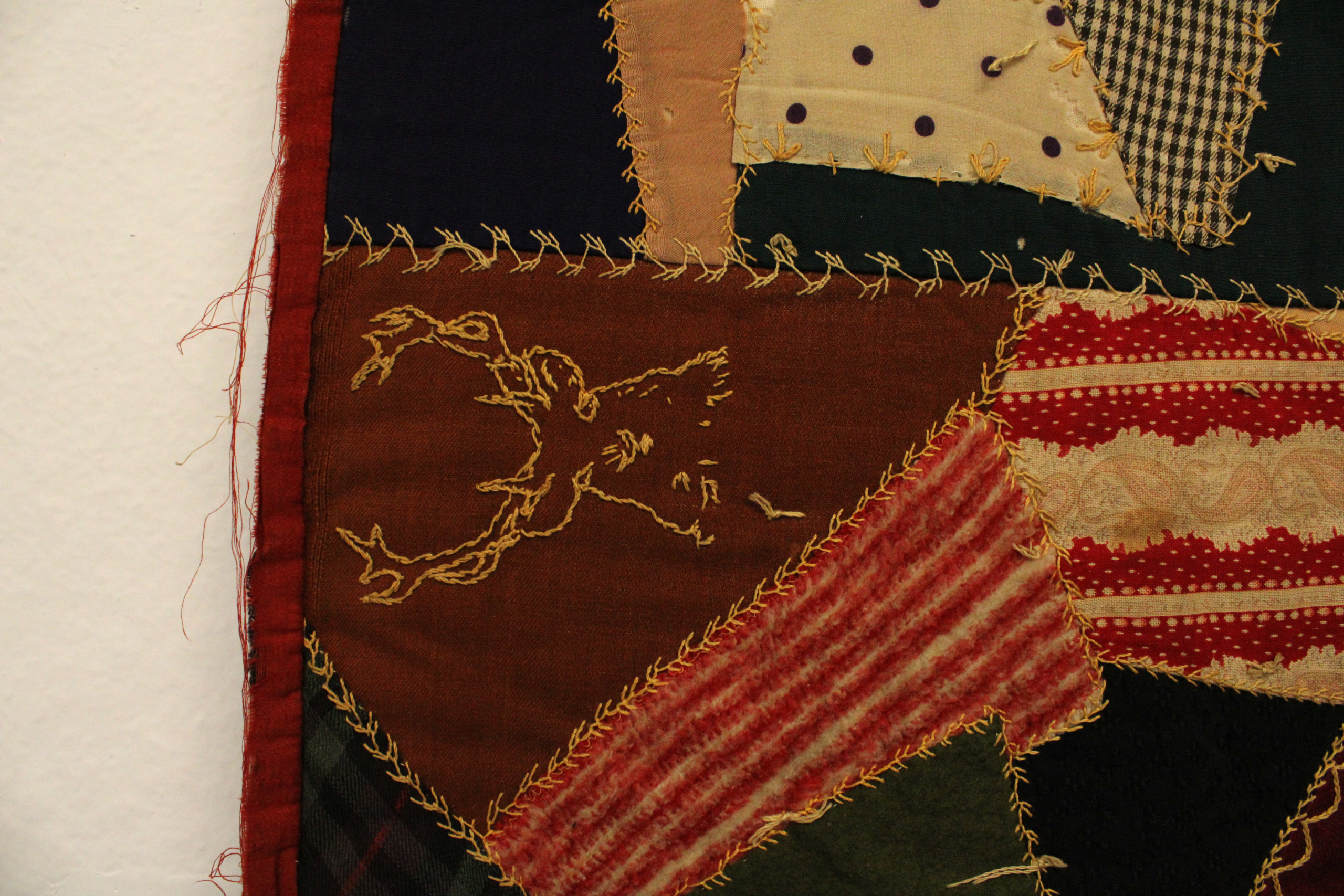
Written by Sonia Gaiess, Collections Management Assistant 2022-2023.
Funding for this blog post was provided in part by the Heritage Grants Program (Province of Manitoba) and the Young Canada Works Program (Government of Canada – Canadian Heritage).



